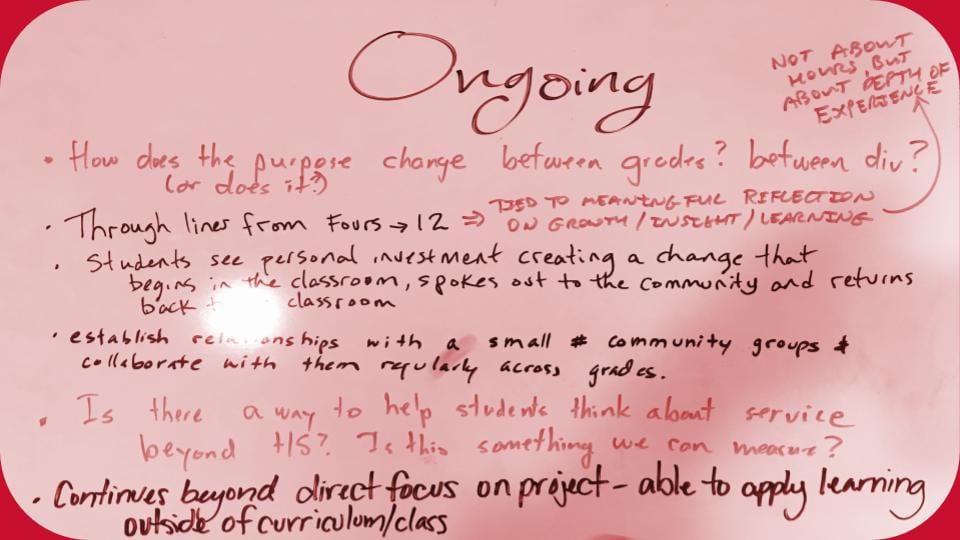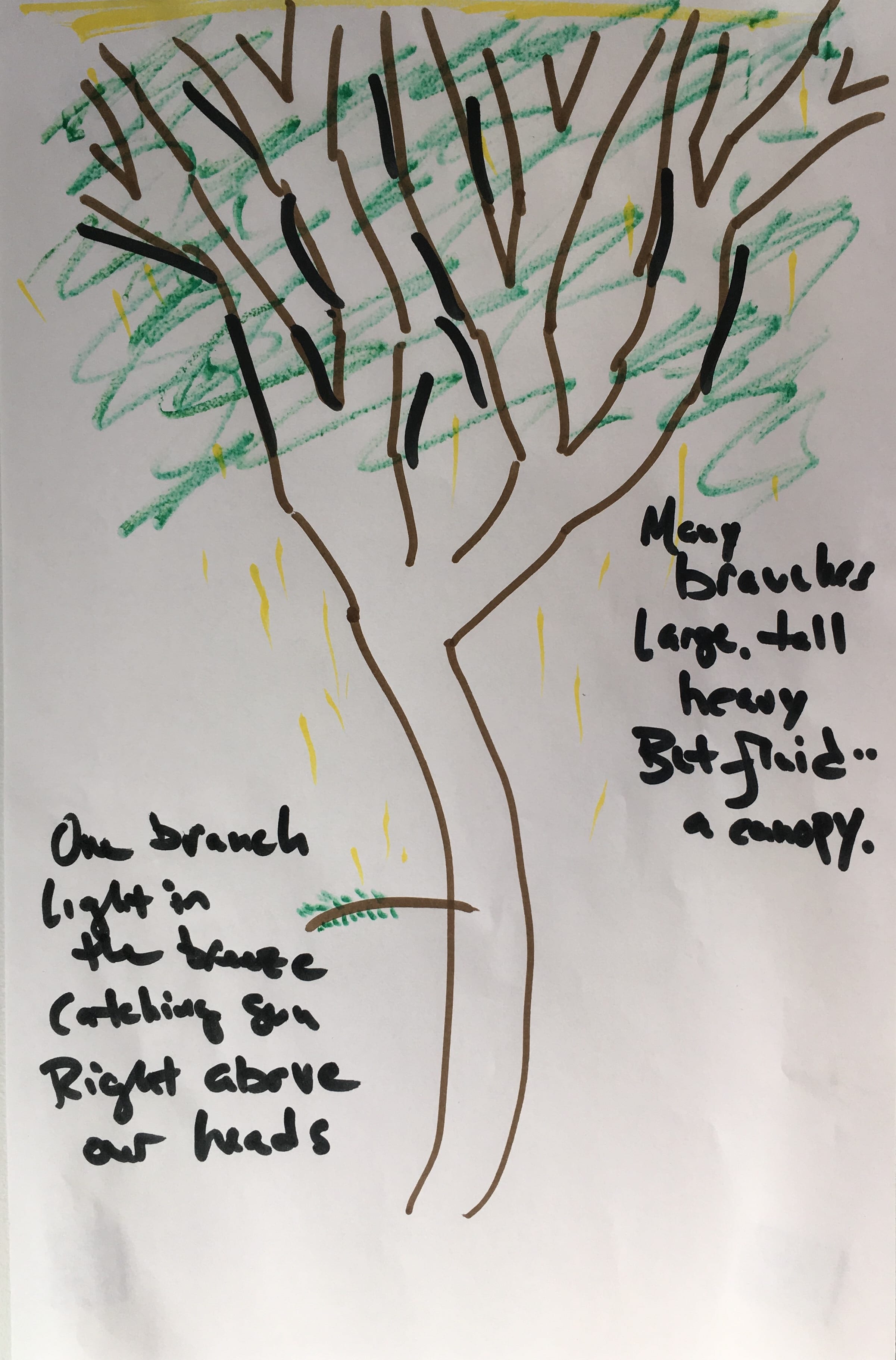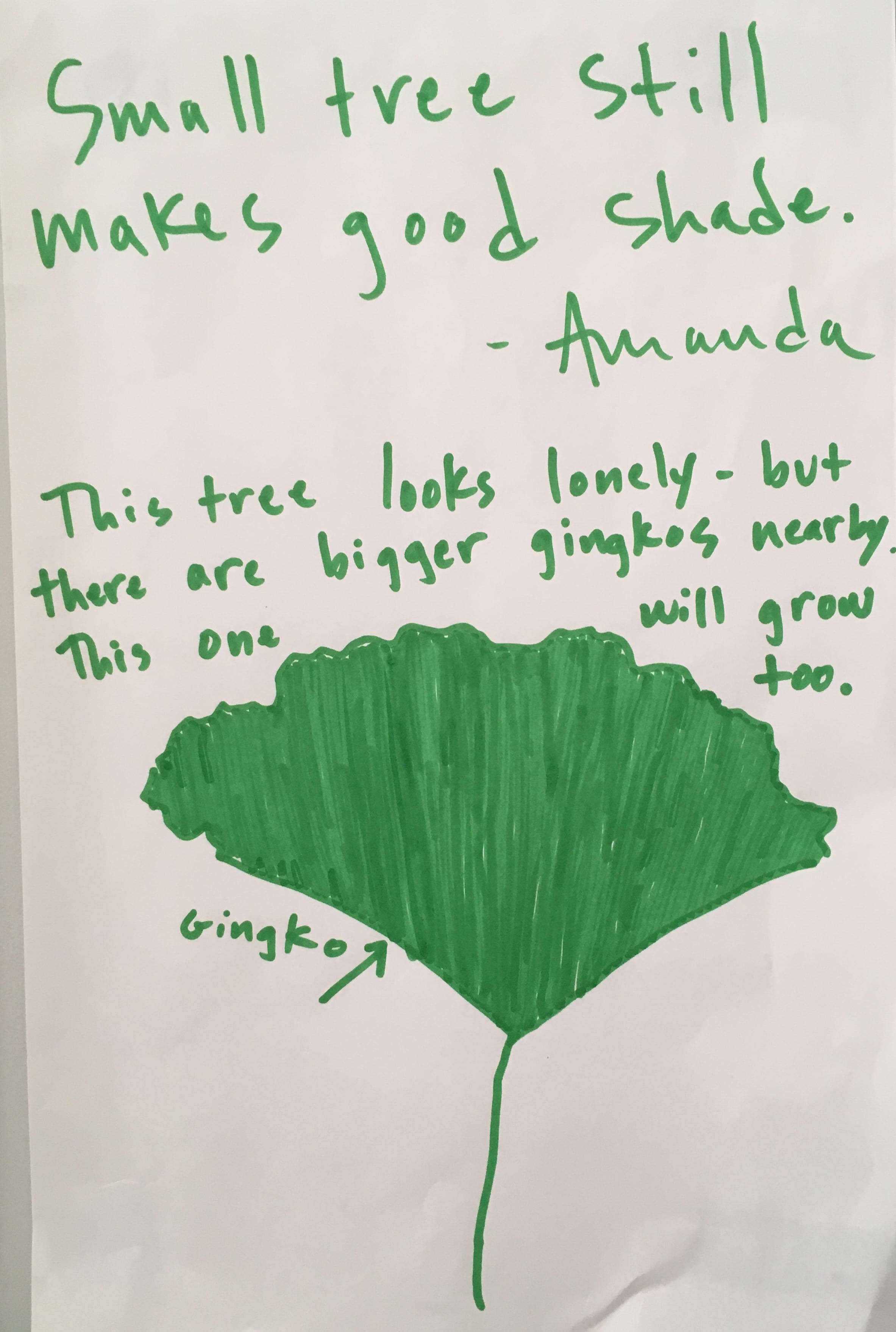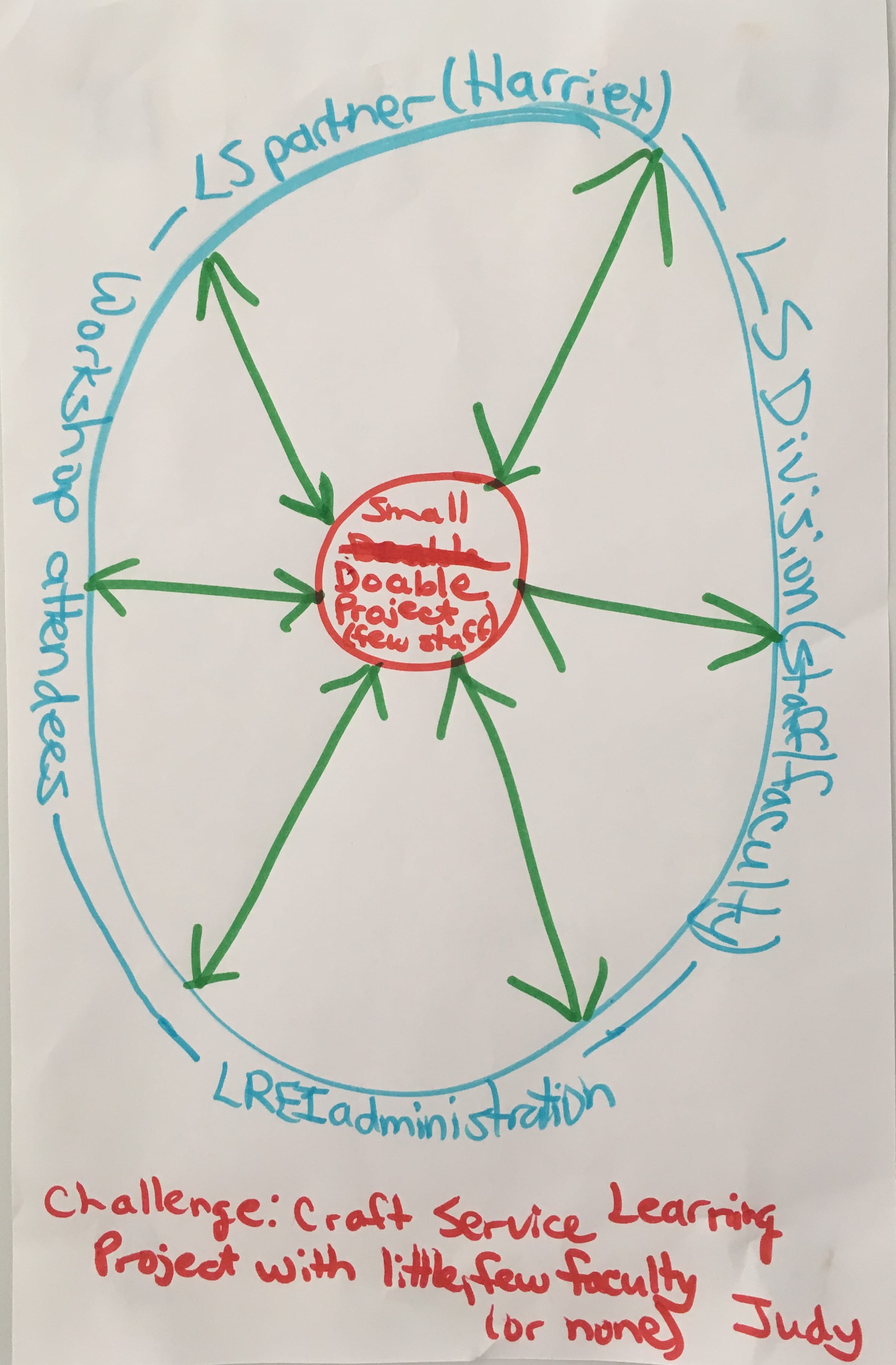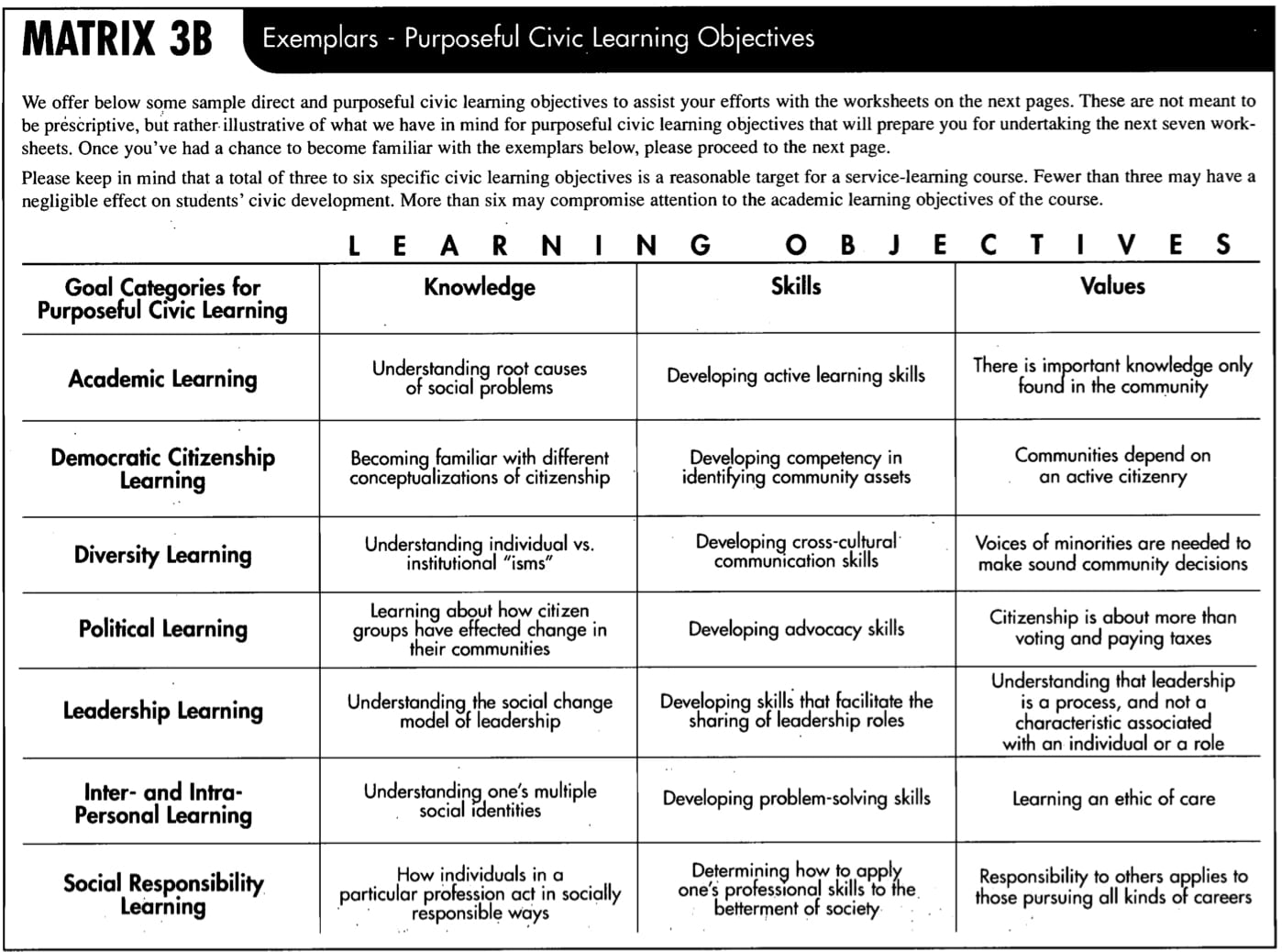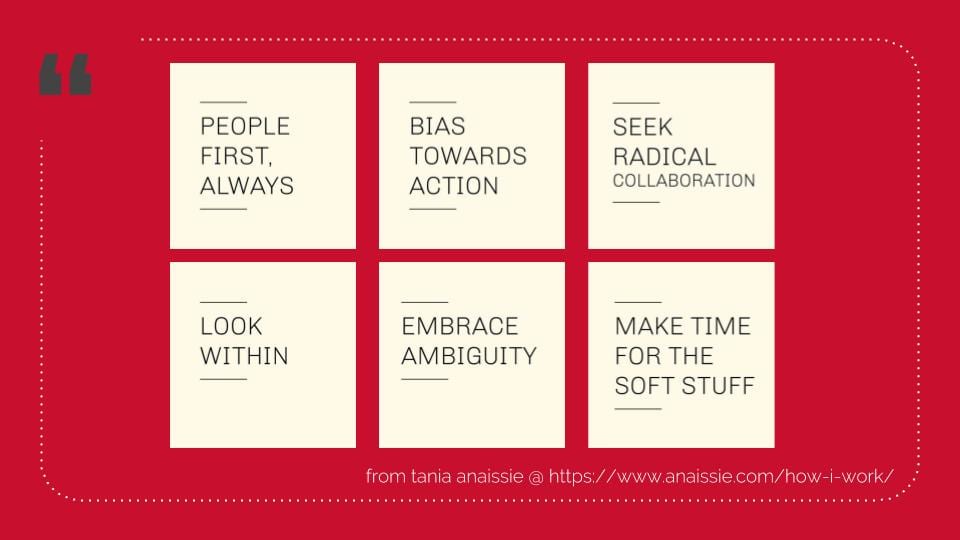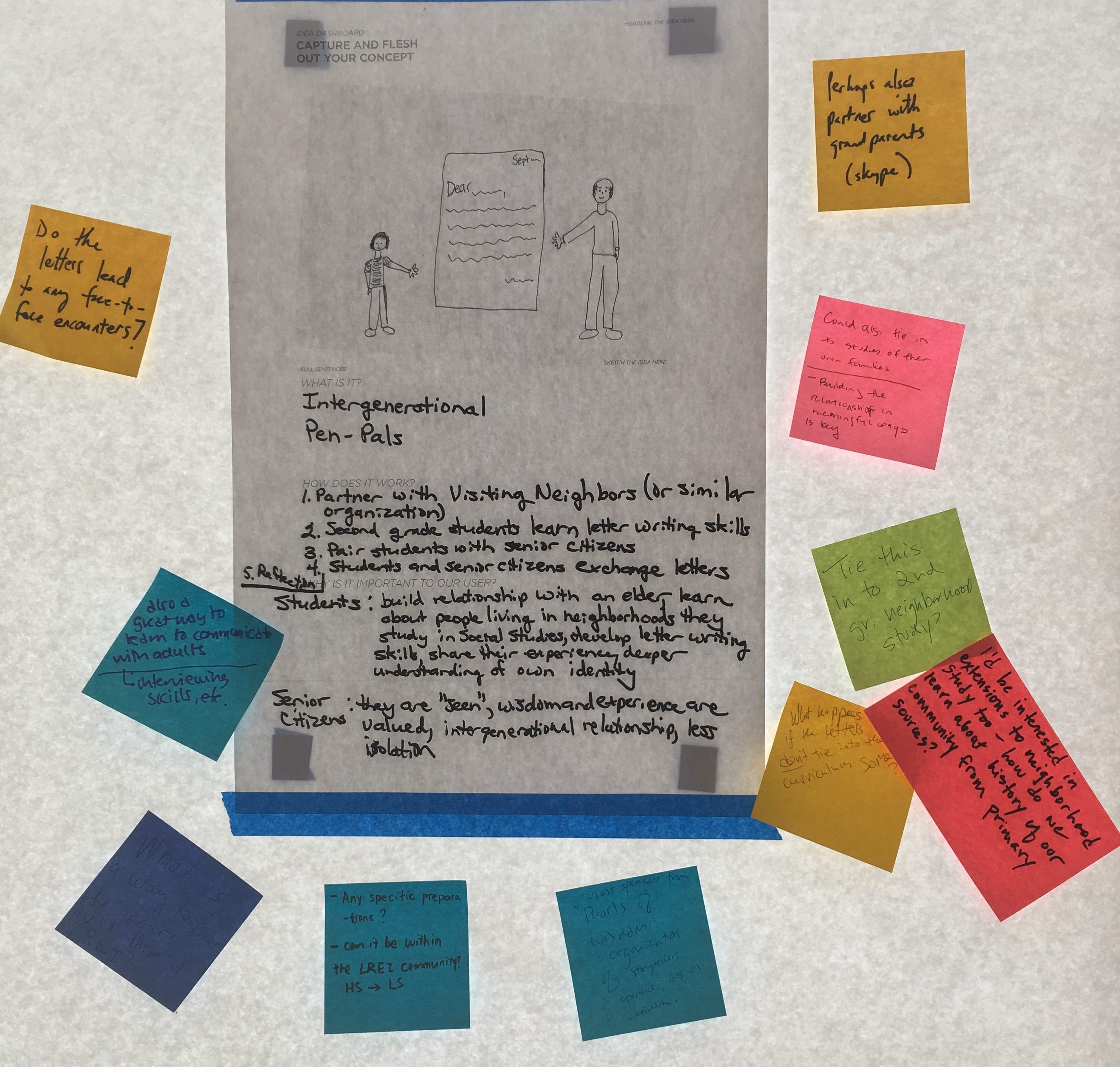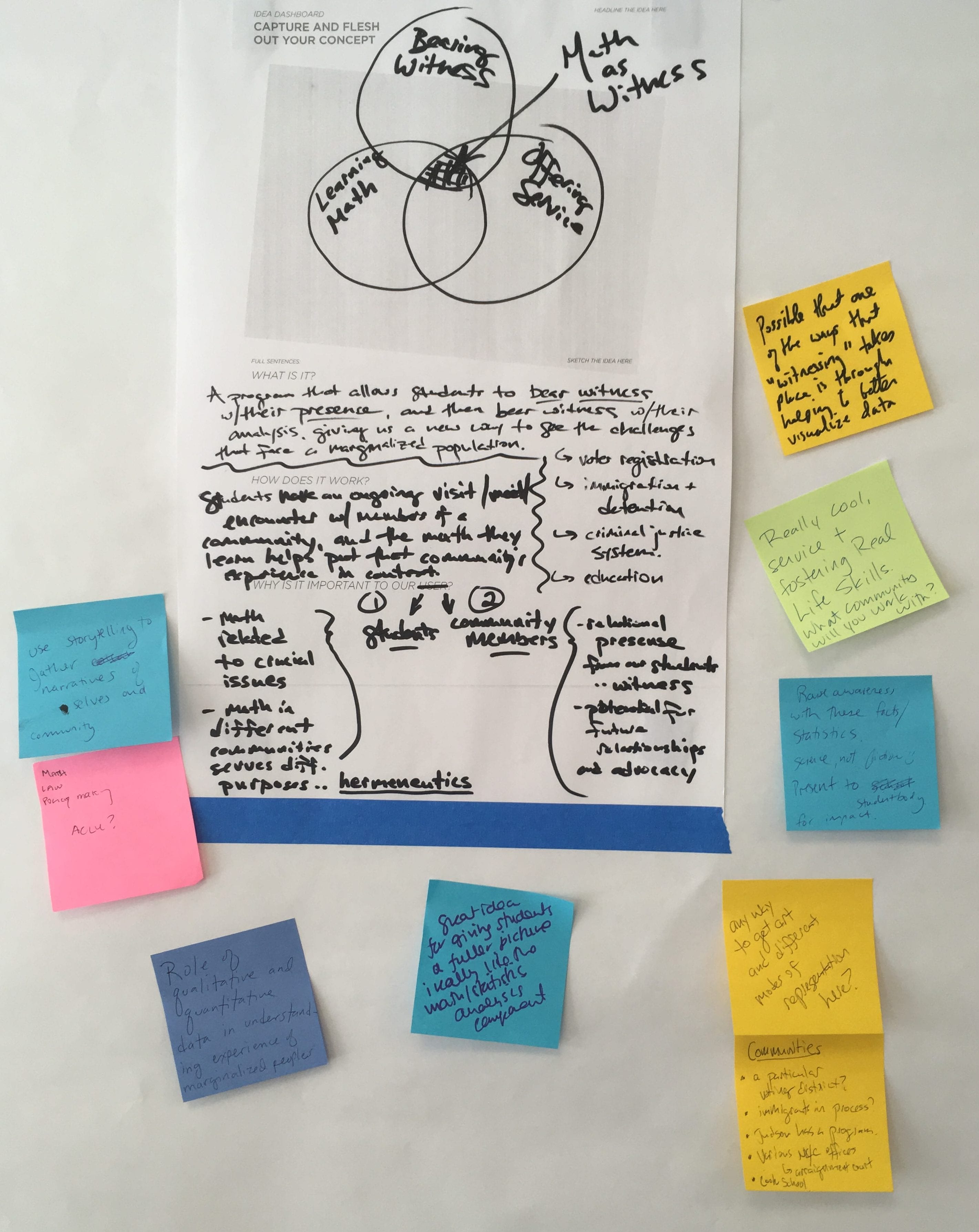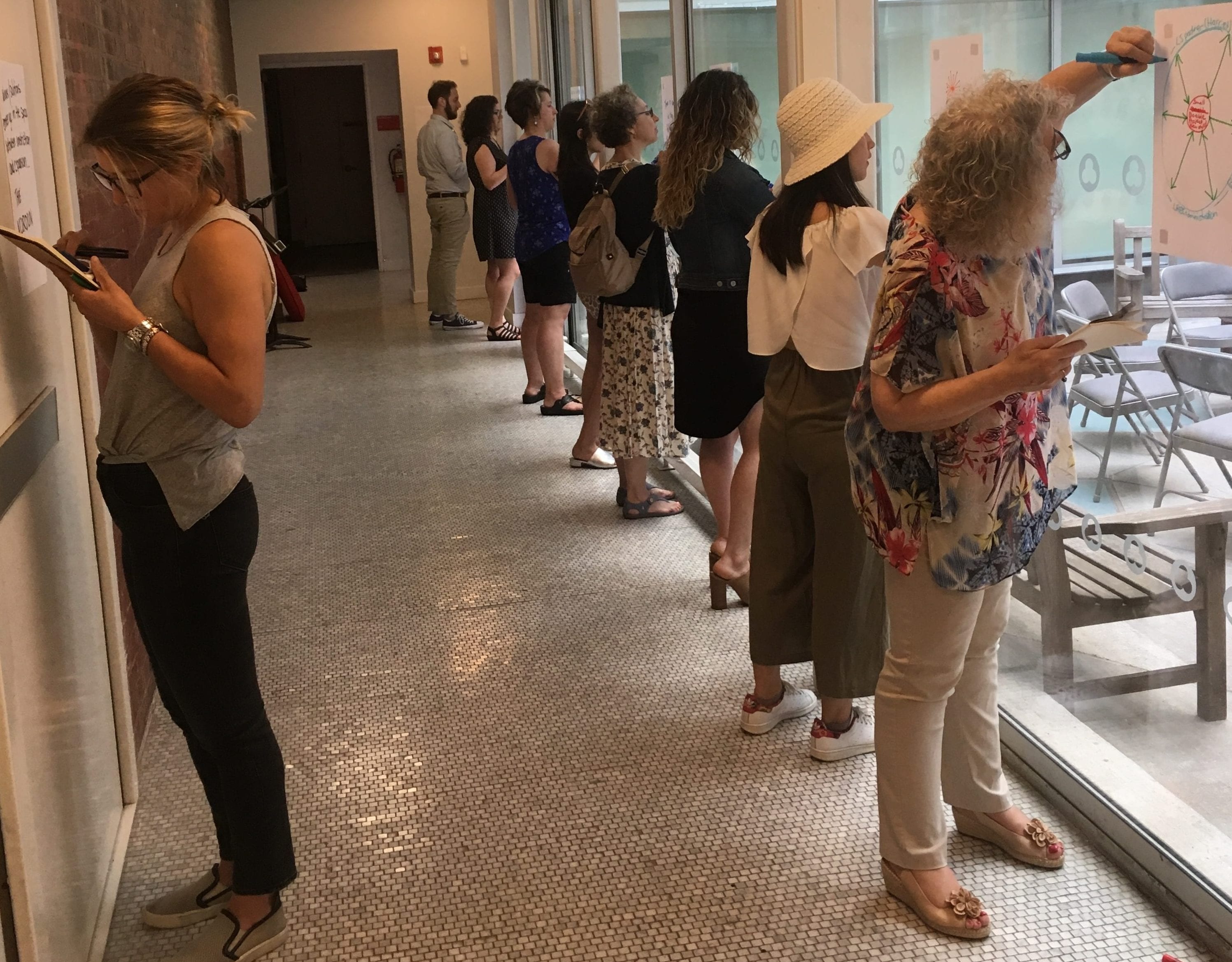The current LREI strategic plan states a s goal the need to:
To support this goal, faculty engaged in a variety of conversations over the past two years. Some of these took place in smaller groups and some were carried out as a full faculty. These conversations surfaced five key attributes of powerful service learning experience around which there was consensus among the faculty. These attributes call for the design of service learning experiences that are:
- grounded in relationships
- relevant to those engaging in the work
- connected to the curriculum
- designed at a achievable scale
- ongoing and seen in the context of a 14-year learning continuum
In the spring of 2018, a “task force” of faculty and staff met to discuss next steps. Director Phil Kassen challenged the group to consider what would be the meaningful next steps to get us to the start of the 2019-2020 school year with a clear strategic vision and plan for what service learning could look like across the 14-year grade span.
To address this, the group cataloged the many existing projects that currently define the LREI service learning experience. Some of these were longstanding class or grade level projects, some were more newly developed and others had been designed in response to emergent issues in the world. The group noticed that while most of these projects were aligned to the mission, most were carried out as standalone projects and lacked a sense of collective cohesion when looked at from an institutional perspective.
It became clear to the group that in order to meet the 2019-2020 challenge it would be necessary to:
- design a framework that would guide teachers in designing individual projects and
- ensure that the framework would allow these projects to fit more easily into a developmental arc for service learning experiences across the whole institution.
The group asked, “How might we design for a series of experiences that meet students where they are, but also prepare them for where they are going?”
The group decided that the best way to begin this work was to move beyond conversation and develop a set of prototype projects that could be implemented during the 2018-2019 school year. These projects would provide insights on individual project design and help us to begin to establish a larger connected ecosystem of service learning experiences.
A call went out to the faculty and staff seeking a cohort of interested participants for this pilot stage. At the same time, Lower School Psychologist Judy Lambek, Director of Equity & Community Sandra “Chap” Chapman and Director of Learning & Innovation Mark Silberberg set out to design a two-day “Service Learning Lab” to kick off this work.
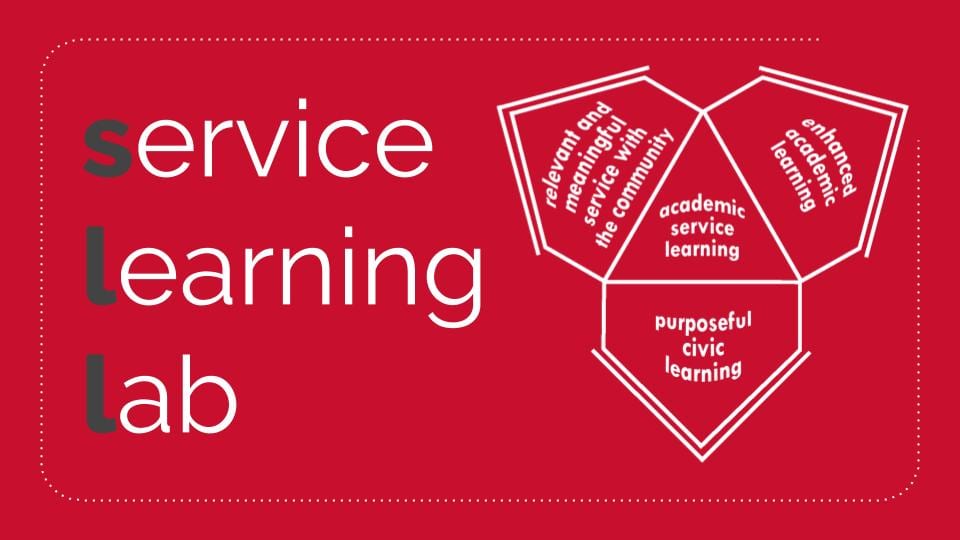
And so on Monday, June 18th, the following met to initiate the next phase of this work:
- High School Admissions Director Jessica Acee
- Middle School humanities teacher Megan Ashforth
- High School English teacher Jane Belton
- Middle School humanities teacher Amanda Goodwin
- High School math teacher Pat Higgiston
- Middle School humanities teacher Jessica Hwang
- Lower School Learning Specialist Harriet Lieber
- Alumni & Special Events Manager Elisabeth Ingwersen Mendez
- Middle School Librarian and Director of Library Services Jennifer Hubert Swan
- High School Mandarin teacher Jessica Tan
In addition to the five attributes identified by the LREI community prior to the lab, the group was also guided by the work of Bryan Stevenson and the four key insights that he has posited about service focused work/learning and developing an orientation to empathy:
We must get “proximate” to suffering and understand the nuanced experiences of those who suffer from and experience inequality. Stevenson believes that “if you are willing to get closer to people who are suffering, you will find the power to change the world.”
We must change the narratives that sustain problems. Narratives that fail to acknowledge or accurately portray the reality of inequality only serve to perpetuate it. Stevenson referenced the politics of fear and anger that led to “zero tolerance” policies and armed officers in schools that promote a narrative that students in schools are criminals to be punished rather than children to be taught.
We must stay hopeful about what we can do to end injustice.
We must be willing to do things that are uncomfortable. Stevenson observed that fighting—sometimes in vain—for the rights of some of the most downtrodden members of society can feel uncomfortable. However, there is restorative power in doing so.
As an opening activity, participants engaged in an inspiration walk around the neighborhood to identify a metaphor to help frame their work in the lab. The walk also helped participants to:
- hone the skills of observation and synthesis
- show the power of changing one’s perspective via observation, synthesis, metaphor
- practice paying attention to the world around you and to use your environment as a source of inspiration
Through this opening activity a number of powerful metaphors emerged:
Participants identified purposeful civic-learning objectives based on these exemplars,
explored a model for structuring their prototypes,
and explored key elements of liberatory design
all of which contributed to the first drafts of the project prototypes:
Tuesdays with Marie - Amanda Goodwin and Jennifer Hubert Swan
“Tuesdays with Marie” (inspired by and in memoriam to Marie Weiss, LREI school secretary, mother, grandmother, and much beloved library volunteer)
We plan to partner with DOROT to foster intergenerational relationships between 6th and 7th graders in our advisories. We want our students to learn the skill of communicating across generations, to dismantle stereotypes of the elderly, and look beyond their own immediate experiences. We plan on documenting their experiences through writing and perhaps video and envision it culminating in a Middle School meeting presentation at the end of the year.
Starting in October and every other week, we’ll be meeting with senior Dorot volunteers to have a Friday reading group during activity period. Seniors and our 6&7 grade advisees will all read one book together and have discussions, play games, make art related to that book. We will meet in the library here at school. We have some plans to visit individual seniors in the winter, but for now, we’re having a Friday book group to start our program.
As mentioned above a second phase of this program may include visits (in small groups and accompanied by a teacher) either at the DOROT center or seniors’ homes. Right now though, we excited about this first phase.
After seeing how things go the first year, we have some ideas about how to open this experience up to the whole middle school through advisory. But we think it is prudent to see how it works on a smaller scale first.
Immigration and Exile English Elective Course - Jane Belton
This fall, my English elective course, Exile and Immigration, will be partnering with The New Sanctuary Coalition of NYC, “an interfaith network of congregations, organizations, and individuals, standing publicly in solidarity with families and communities resisting detention and deportation in order to stay together” (http://www.newsanctuarynyc.org/). Students will be participating in accompaniment training and then, in groups, will volunteer to accompany immigrants to immigration court. At its heart, accompaniment is about bearing witness, providing emotional support, and publicly demonstrating that immigrants are part of and supported by a larger community.
Over the course of the trimester, we will examine how the ways in which we identify affect our individual experiences of accompaniment. Together, we will engage in thoughtful reading, observation, storytelling, self-reflection, and critical thinking, working to understand ourselves more deeply and to dismantle and disrupt harmful narratives about immigrants.
The elective culminates with an oral history project. While participants in the project will most likely not be connected to New Sanctuary Coalition, I hope that our work with the organization allows students to think about what it means to move into the position of “listener” and to honor an individual’s voice, story, and experiences, without judgment.
Math as Witness - Pat Higgiston
In broad strokes, the project consists of having the students be in relationship with a marginalized community, doing something that requires their attentive presence (getting proximate, in Stevenson’s model), and to be using the math they are learning to come to know and learn the context of that community more deeply/critically (changing the narrative, in that model again). So there’s a relational element, and there’s an intellectual element. Finally, depending on the age of the students, I would like them to be able to use the math to offer the community some kind of helpful knowledge by the end of the school year (staying hopeful: it’s got to be something that might help; doing uncomfortable things: they’ll have to help someone with math! that’s not easy!).
I hope to do this with my Discrete Math class this year. I was interested in having a partner community in mind before the school year started, but that seems unlikely, and the first 2.5 months of that class will be devoted to prepping for the midterm elections. HOWEVER, it’s possible that something will grow out of that exploration, and I will eventually work with/task the students with finding groups that could use our mathematical services.
I’m going to plan my discrete class, first with the midterm elections in mind, and then with the goal of finding a partner or partners in the community.
Reduce Waste and Recycle in the LREI Community - Jessica Tan
Why do we do it?
- Inspired by the Design for Change carried out in the Lower School, this is a project that offers students opportunities to lead projects that will make LREI a greener campus.
- In the HS, we have several programs that already exist to make LREI a greener campus. One of them is collecting food waste in our cafeteria. But the majority of members of the community are not aware of its existence. Students dump trash into the compost bin, and food into the trash bins. Learning from the compost program, I think there should be an opportunity to properly educate all LREI members about the difference between waste and resources, and to designate spaces to store them, in order to successfully implement future green projects.
What is it?
- It’s a two phase project that in the first phase, focuses on educating our students to identify and differentiate between waste and resources (including recyclable materials, reusable materials, and compostable).
- In the second phase, participants have opportunities to collaborate with each other to implement solutions to reduce waste in the LREI community. Participants can create their own solutions, whether to make a pocket guide, poster signs, design bins, bulletin board notices, school-wide emails, lead assembly etc.
- Expand partnership from Lower school with Terra Cycle, an organization that aims to reduce waste through proper education and many programs.
What will participants do?
- Participants sign up for weekly X-block
- Participants choose their own area of focus (recycle, reuse, etc), and form their own groups. Each group will lead a project for solutions to be implement in the LREI community.
- Students visit recycled material art exhibitions to learn creative use of recyclable materials
- Field trip to the Terra Cycle labs
- Lead an assembly to educate all members in the community, or make school-wide announcements in sharing their effort in reducing waste
- Meetings and interview with the lower school compost team, and Terra Cycle collaboration.
"Enough": An Investigation of Scarcity and Surplus - Megan Ashforth and Jessica Hwang
This is a year long, Social Studies, English and Advisory integrated project that will emerge from the children’s response to the social studies curriculum on the rise of civilizations. We want the students to understand what it means to have enough by looking at surplus and scarcity and to take action on an individual and schoolwide level by using their surplus to address scarcity and benefit the larger community.
Potential goals:
1. Students will plan a way for their lunch period to weigh food waste right after the Ashokan trip (where they will be weighing their waste all week in order to recognize and produce less waste). Students will set goals, graph results, communicate to the students their progress. Students will reflect in discussion and writing the essential question “why might the goal of ‘enough’ be better than surplus?”
2. Students will conduct self-inventory on various areas of their lives and reflect on scarcity/surplus/enough: personal school supplies, toys, distractions. During holiday season, perhaps find ways to collect, recycle, redistribute to others your surplus (i.e. I asked for 5 new toys, so I will give 5 toys away).
3. Read “Omnivore’s Dilemma for Young Readers” as non-fiction text in English. Watch documentary “A Place at the Table”.
4. Terracycle continuation from 4th grade.
5. Visit composting center as field trip
6. Later in the year, students will design and execute their own action plans in small groups to explore what it means to have “enough” in other areas of the school or individual lives. (i.e. paper waste at school, food waste at home).
A Pen Pal Project to Connect Students with Homebound Seniors - Judy Lambek and Harriet Lieber
We are excited about the demonstration project we devised, which is a pen pal program with the second graders in Harriet’s reading group and senior citizens in the Greenwich Village neighborhood. We will develop a partnership with Visiting Neighbors, an organization of volunteers that provide social and transportation services for senior citizens who live alone.
Through this program students will learn about letters writing, information about living in this neighborhood (as part of their social studies focus on neighborhoods of New York City), and different points of view of the world other than their own. The students and the senior citizens will benefit from the intergenerational bonds they form. The seniors will gain more connection outside of their home and feel valued.
If successful, our hope is to expand this program to the second grade.
A Deeper Dive for LREI Cares - Elisabeth Ingwersen Mendez
Since last year I have been working with the high school student-led community service group, LREI Cares. LREI Cares meets once a week during x-block to work on various community service projects. As part of the school’s service learning initiative, I propose giving LREI Cares a more defined structure by focusing on one in-depth issue per semester (or year) and by planning a schedule of projects that students can work on at school during x-block in addition to off-site volunteer opportunities.
Last year two groups of 11th graders visited the US/Mexico border during their Place-Based Research Trips to learn about immigration. Based on the excitement and sense of urgency to work on issues related to immigration that the students exhibited after returning from their trips, I propose focusing on immigration next year.
Goals:
- By focusing on immigration in-depth students will:
– Explore the many facets of immigration in order to
gain a broader understanding of the issue.
– Establish long-term relationships with organizations
and the communities that they serve to gain a
more personal and deeper empathy for
immigrant communities - Utilize x-block time to the fullest
- Gain skills in community outreach, volunteering, civic engagement and planning.
- Partner with other HS classes learning about immigration (For example Jane’s class)
Ideas for Projects
Organizations that we could volunteer with:
- New Sanctuary Coalition – an interfaith network of congregations, organizations, and individuals, standing publicly in solidarity with families and communities resisting detention and deportation in order to stay together. They offer a free, weekly immigration clinic at NYU.
- New York State Youth Leadership Coalition – a nonprofit run by undocumented youth that focuses on education, community empowerment and deportation
- Make the Road is a nonprofit that builds the power of immigrant and working class communities to achieve dignity and justice.
- New Immigrant Community Empowerment (NICE) – a nonprofit that organizes and empowers day laborers
- UnLocal – a nonprofit that offers pro and low-bono legal services to immigrants
- First Friends of NY & NJ – a nonprofit that works with immigrants in detention centers
- National Domestic Workers Alliance (NDWA) – a nonprofit that organizes domestic workers who are predominantly women of color and immigrants, teaching them their rights
- New York Immigration Coalition (NYIC) – an umbrella policy & advocacy organization that represents over 200 immigrant and refugee rights groups throughout New York
- Voces Latinas – a nonprofit that offers health services to the
- Latinx immigrant community of Jackson Heights, Queens with a focus on women, the LGBT community, HIV/AIDS and domestic violence
- Mayor’s Office of Immigrant Affairs (MOIA) – supports and leads a range of programs that enhance the economic, civic, and social integration of immigrant New Yorkers. Programs include English class, city IDs and know your rights trainings.
- Mexican Consulate – offers many services to Mexicans living in New York including know your rights trainings, assistance with DACA, etc.
- Desis Rising Up & Moving (DRUM) is a nonprofit that builds the power of South Asian low wage immigrant workers, youth, and families in New York City to win economic and educational justice, and civil and immigrant rights.
At LREI during x-block:
- Invite speakers to LREI Cares to talk about specific issues and/or their organizations
- Pen Pals & Stamp Out Despair Campaign- A letter writing program through First Friends for immigrants in detention centers. You can also supply detainees with materials to write letters so that they can send their own letters.
- Call/write to elected officials about certain issues – reuniting families separated at the border, DACA, etc.
- Translationing documents for UnLocal (for people that speak another language)
- Holding bake sales to raise money for various nonprofits, for example raising money for a NYSYLC scholarship for undocumented students
- Watch documentaries about immigration
– Which Way Home - Help with graphic design for NYIC events
- If students do off-site volunteering, they could present to the group on their experiences
- Generate list of off-site volunteer opportunities with details to share with rest of school in LREI Cares newsletter
- Off-site (during x-block or afterhours)
– Jericho Walks at Varick Street with the
New Sanctuary Coalition
– New Sanctuary Coalition @ NYU – Learn to assist
asylum seekers fill out their applications
– Conversational English Class at Voces Latinas –
volunteer to be an English language partner
– Adult Literacy projects with Make the Road –
help tutor English, computer, etc.
– Visiting detainees
– Attend events – Know Your Rights trainings, rallies,
legal clinics
– Assist Voces Latinas with insurance forms for
immigrant community
Next Steps:
- Meet with LREI Cares leaders to review ideas, get their buy in and work with them to create an implementation plan based on their interests
- Reach out to organizations and create a schedule for the rest of the year with projects that can be done at school as well as offsite volunteer opportunities
Questions for LREI Care Leaders:
- Which issue would we like to focus on?
- Which organizations would we like to reach out to?
- Should we add a requirement for class attendance and/or off-site projects?
As each of these projects takes shape, we’ll gather learnings about design for different age ranges, design for single subject and interdisciplinary projects and design for projects in advisory and/or co-curricular contexts. By drawing on the experience of colleagues as they implement these prototype projects, we hope to develop a framework for design that can be used across the full LREI program.
* For those who are interested in the design of this summer’s Service Learning Lab, the slidedeck is below:







